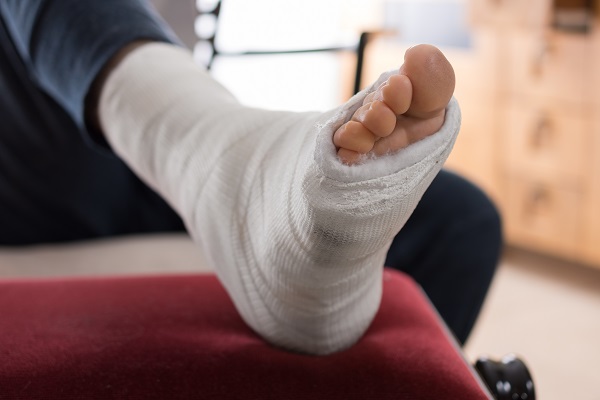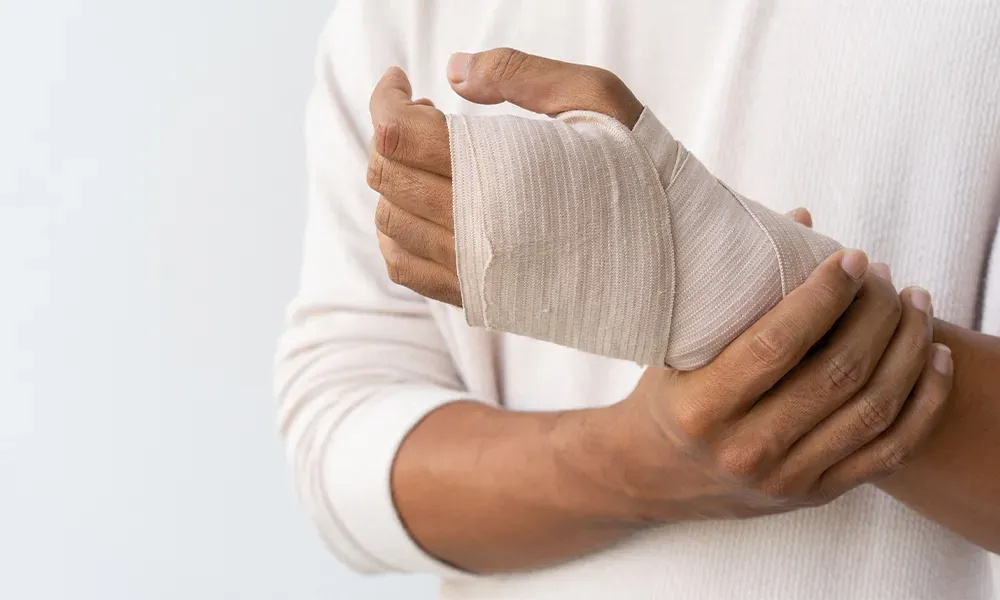Car accidents in Queens can leave victims dealing with more than just vehicle damage. Bone fractures are among the most common injuries, often causing long-term pain, medical expenses, and disruptions to daily life. For many, the road to recovery isn’t just physical—it’s also about navigating the legal system to secure compensation.
When someone else’s negligence leads to an accident, victims have the right to pursue legal action. Understanding the available options can make all the difference in covering medical bills, lost wages, and other damages. In Queens, experienced legal professionals can guide victims through this challenging process, ensuring their rights are protected.
Common Causes of Bone Fractures in Car Accidents
Bone fractures in car accidents typically result from sudden, forceful impacts. High-speed collisions, improper use of seat belts, and airbag deployment often contribute to these injuries. Victims may sustain fractures in their arms, legs, ribs, or spinal vertebrae, depending on the accident’s severity and impact direction.

1. Head-On Collisions
Head-on collisions transmit significant force, fracturing bones in the lower extremities. Femur and tibia breaks are common, especially when victims’ legs are pinned by crumpled vehicle interiors.
2. Rear-End Accidents
Rear-end accidents frequently cause fractures in the cervical spine. Whiplash-associated forces can extend to vertebral damage, particularly in the elderly or those with pre-existing conditions.
3. Side-Impact Collisions
Side-impact collisions, including T-bone crashes, often result in broken ribs or pelvis fractures. Passengers on the side of impact face higher risks of injury from intrusion into the vehicle’s cabin.
4. Rollover Accidents
Rollover accidents create unpredictable movements, leading to fractured arms, clavicles, or shoulder blades. Injuries occur when victims brace against the motion or from roof crushing.
5. Pedestrian Accidents
Pedestrians struck by cars often experience extreme force on contact, leading to compound fractures in lower limbs. Proximity to large vehicles amplifies the severity of impacts.
6. Motorcycle Involvement
Motorcyclists involved in accidents face high risks of open fractures. Tibia, fibula, and forearm bones frequently break due to exposure and lack of structural protection.
Legal guidance from firms like Oresky & Associates can clarify options for victims of bone fractures caused by negligent drivers in Queens. Effective representation is critical in securing compensation aligned with accident-related damages.
How to Establish Fault in Queens Car Accident Cases
Determining fault in Queens car accidents typically requires a thorough investigation. The process relies on collecting and presenting evidence to prove negligence caused the collision and injuries.
Collecting Evidence
Evidence forms the foundation of any car accident claim. Key items include:
- Police Reports: Official documentation provides details like accident location, impact descriptions, and citations issued.
- Eyewitness Statements: Testimonies from neutral parties often help clarify events leading to the crash.
- Surveillance Footage: Videos from traffic cameras or nearby businesses can validate claims.
- Photographs: Images of vehicle damage, road conditions, and injuries strengthen the case.
- Medical Records: Diagnoses and treatment plans connect the accident to bone fractures or other injuries.
Proving Negligence
Four elements are required to establish negligence:
- Duty of Care: Queens drivers owe a duty to follow traffic laws and ensure road safety.
- Breach of Duty: Proof shows the at-fault driver violated this duty. Examples include distracted driving, speeding, or running red lights.
- Causation: Evidence links the negligent actions directly to the accident and resulting injuries.
- Damages: Physical, financial, or emotional hardships, such as fractured bones or lost wages, must be documented.
Role of Legal Representation
Legal professionals, such as NYC Fractured & Broken Bones Lawyers, assist victims in proving negligence. Firms like Oresky & Associates analyze evidence, interview witnesses, and negotiate with insurers. Their expertise ensures the strongest possible case for securing compensation.
Comparative Negligence Rule
Queens follows New York’s comparative negligence law. Victims may recover damages even if partially at fault, but the compensation decreases based on their fault percentage. For example, if a victim is 20% responsible, they receive 80% of the total settlement.
Filing a Compensation Claim for Fracture Injuries
Victims of car accidents in Queens suffering from bone fractures can file claims to seek compensation for damages. Such claims address medical bills, lost wages, rehabilitation costs, and pain and suffering caused by the injury. Ensuring compliance with New York’s legal procedures is essential for a successful outcome.
Gathering Relevant Documentation
Accurate documentation strengthens a claim. Victims are advised to collect medical records detailing the severity and treatment of fractures, accident-related expenses, and proof of income loss. Additional evidence, such as police reports, eyewitness accounts, and photos of the accident scene, establishes liability.
Meeting Statutory Deadlines
New York imposes a statute of limitations on personal injury claims, including car accident-related fractures. Victims generally have three years from the accident date to file. Missing this deadline can prevent victims from recovering damages.
Building a Claim with Legal Support
Experienced legal counsel, such as Oresky & Associates, enhances claim preparation. Legal professionals assess evidence, calculate fair compensation, and manage negotiations with insurers. They ensure compliance with procedural requirements, minimizing errors that could delay or jeopardize the claim.
Navigating New York’s No-Fault Insurance Rules
New York operates under a no-fault insurance system. Victims must first seek compensation from personal injury protection (PIP) coverage for medical expenses and lost earnings. Claims exceeding PIP limits or involving severe injuries, like displaced fractures, may proceed against the at-fault party.
Overcoming Insurance Challenges
Insurance adjusters may undervalue fracture-related claims. Skilled attorneys counter low offers by leveraging medical reports, expert testimony, and economic valuations to support the victim’s case, ensuring a fair settlement.
Medical Documentation Needed for Bone Fracture Cases
Accurate medical documentation plays a critical role in car accident cases involving bone fractures. Detailed records provide essential evidence to support claims for compensation, ensuring victims can link their injuries to the accident and demonstrate the severity of their condition.
Required Records for Bone Fracture Cases
- Emergency Room Reports
Emergency room records capture initial diagnoses and treatments for fractures. These often include X-rays, MRIs, or CT scans confirming the bone injury. - Physician’s Notes
Notes from treating physicians detail the extent of the fracture, required procedures like surgeries or casting, and recovery prognosis. - Imaging Results
Diagnostic images, such as X-rays or CT scans, visually demonstrate the fracture’s location and severity, serving as indisputable evidence. - Physical Therapy Records
Rehabilitation records document ongoing care, limitations, and recovery time, which are important in calculating long-term damages. - Medical Bills
Expenses for emergency care, surgery, follow-up visits, and therapy establish economic losses stemming from the injury.
Importance of Documentation in Legal Claims
Thorough medical documentation strengthens claims by verifying the direct link between injuries and the accident. It also helps NYC Fractured & Broken Bones Lawyers, such as those at Oresky & Associates, quantify damages for economic and non-economic losses. Missing or incomplete records may weaken a case, reducing potential compensation.
The Role of Insurance in Car Accident Settlements
Insurance plays a critical role in compensating victims of car accidents in Queens. Under New York’s no-fault insurance system, personal injury protection (PIP) coverage is the first source of compensation. PIP can cover medical expenses, lost earnings up to $2,000 per month for three years, and other reasonable costs, such as transportation to medical appointments, regardless of who caused the accident.
For severe injuries, like fractures requiring surgery or prolonged rehabilitation, costs often exceed PIP limits. Victims can then file claims against the at-fault driver’s liability insurance. This requires providing evidence of fault, such as police reports, medical records, and damage assessments. Attorneys, including NYC Fractured & Broken Bones Lawyers, can aid in presenting comprehensive claims to maximize compensation.
Insurance adjusters frequently attempt to undervalue claims, especially for long-term effects such as chronic pain or reduced mobility. Legal professionals, like Oresky & Associates, counter these tactics through strong negotiations supported by detailed documentation, including medical bills and proof of lost wages. This ensures victims receive settlements that address both current and future financial and physical hardships.
Umbrella policies or underinsured motorist coverage may also help when the at-fault driver’s policy limits are insufficient for the full extent of damages. Accurate advice from experienced attorneys ensures victims explore all coverage options to secure adequate compensation.
How Legal Professionals Advocate for Queens Accident Victims
Car accidents resulting in bone fractures can leave victims facing significant physical, emotional, and financial challenges. Legal professionals in Queens play a vital role in helping victims secure the compensation they deserve by navigating complex insurance systems, proving negligence, and countering undervalued settlement offers.
With their expertise, attorneys ensure every aspect of a case is addressed, from gathering crucial evidence to calculating damages for medical bills, lost wages, and pain and suffering. Their dedication provides victims with the support needed to rebuild their lives after a traumatic accident.

